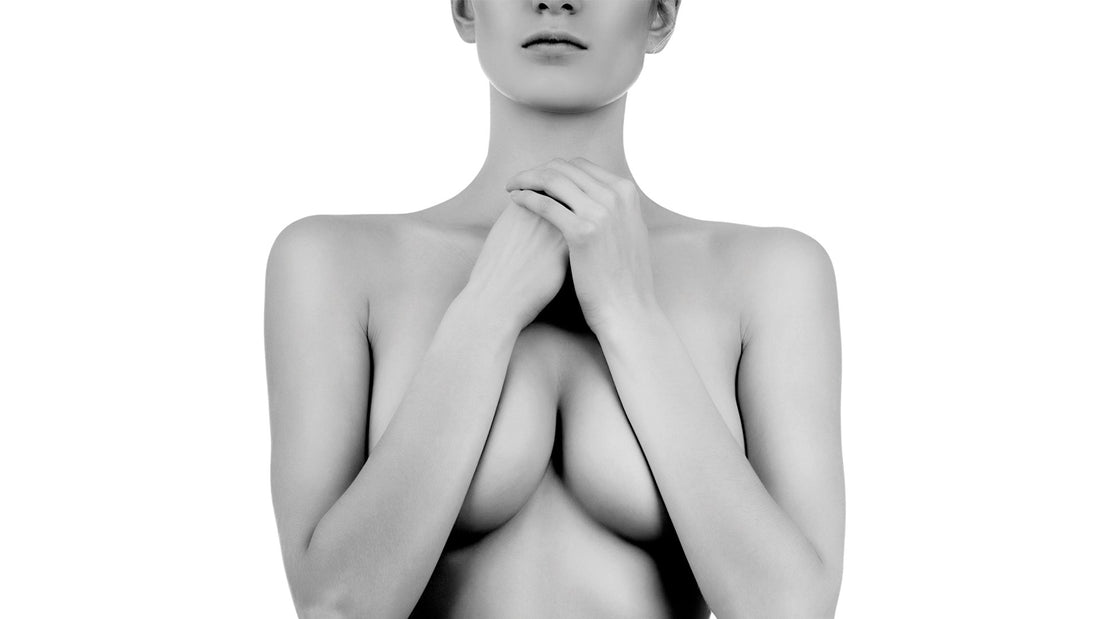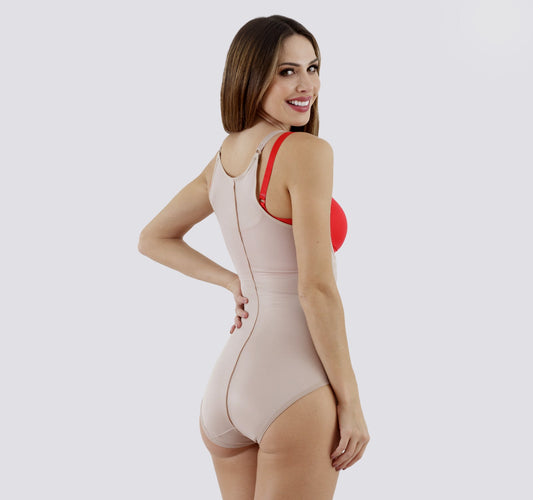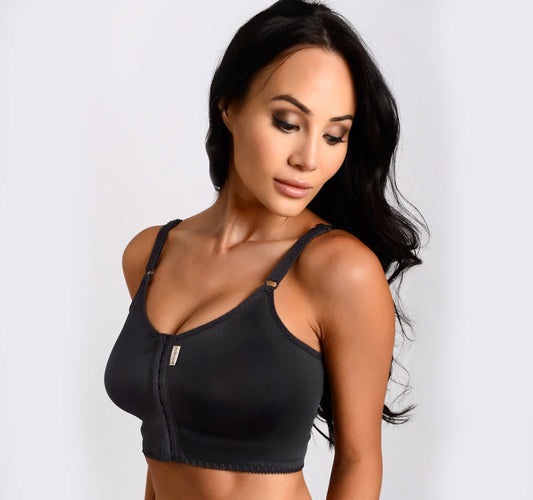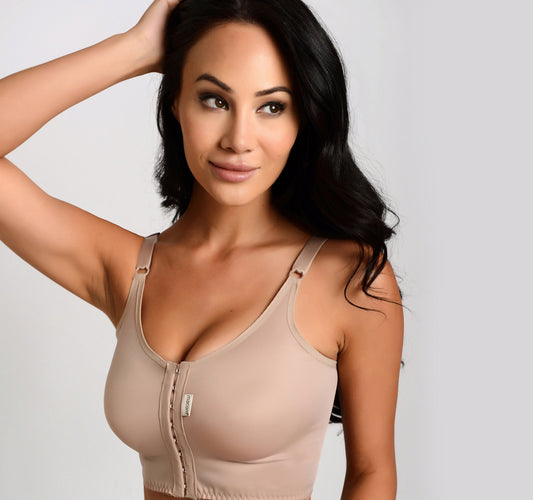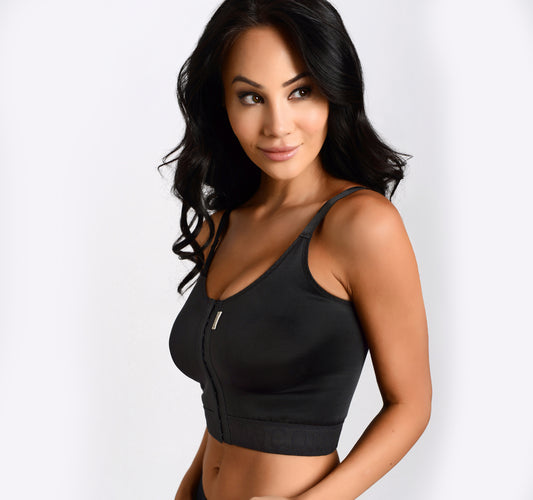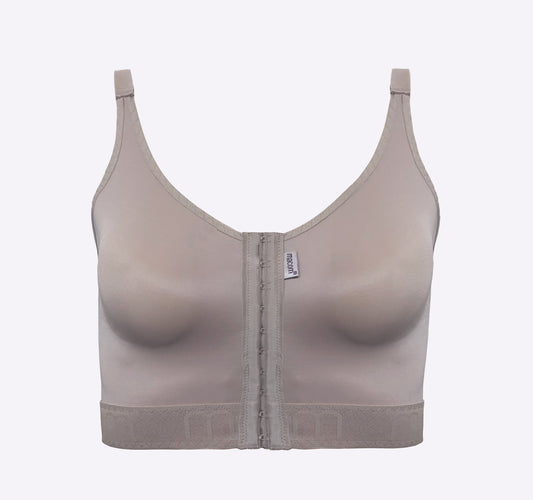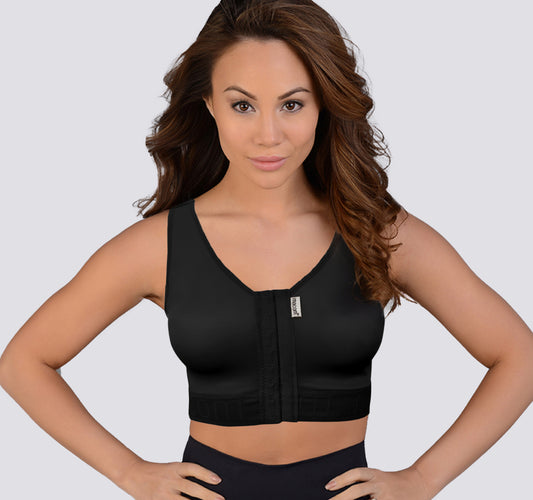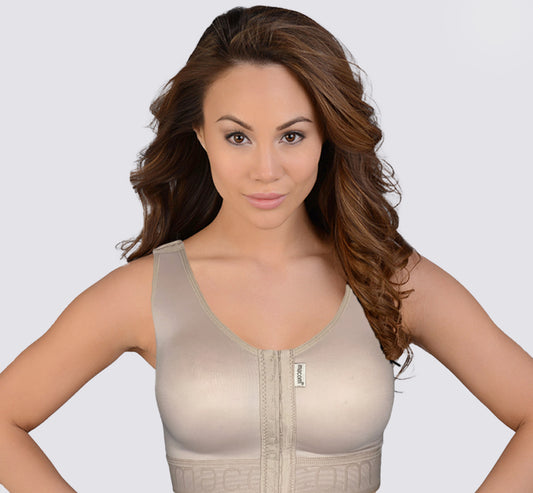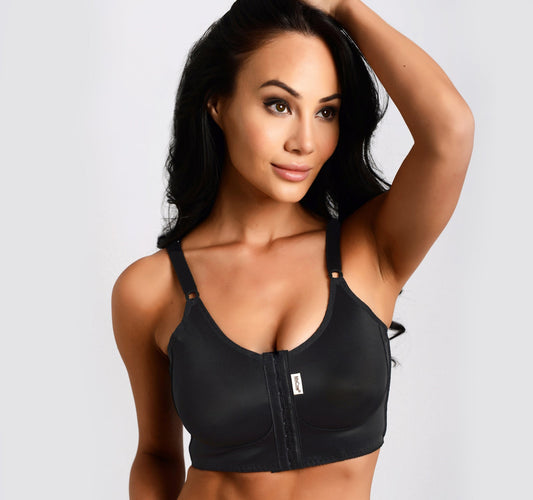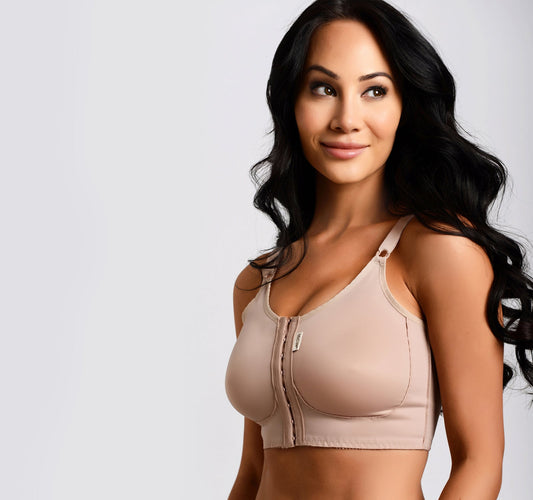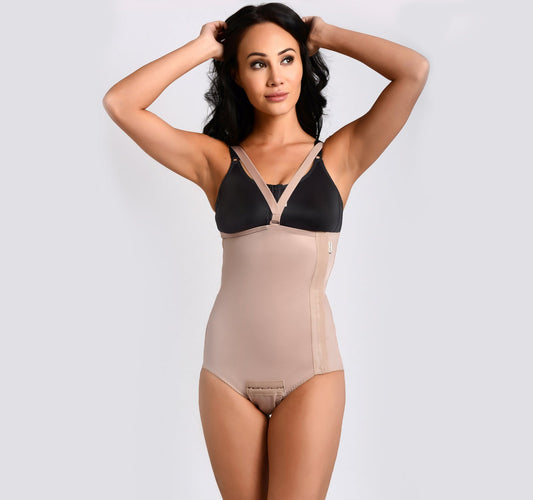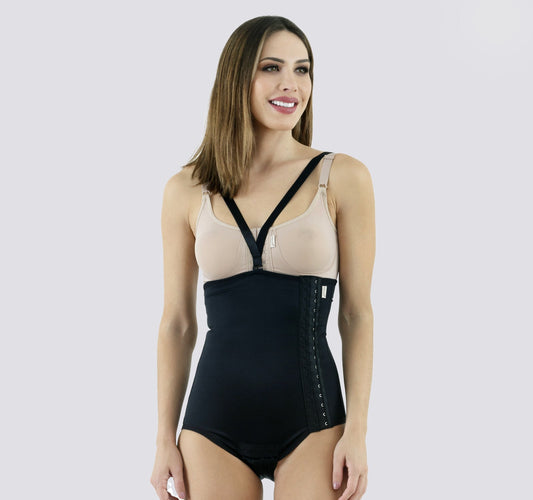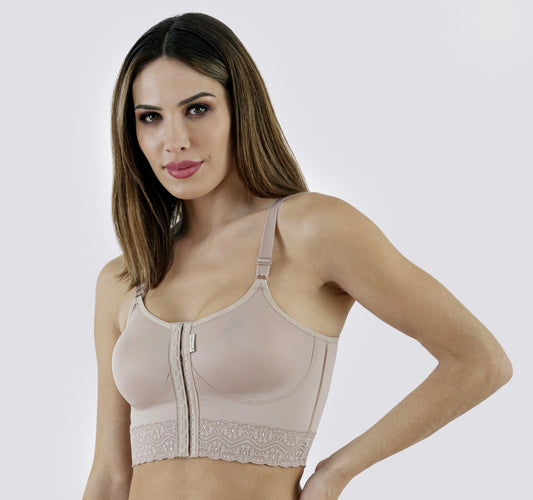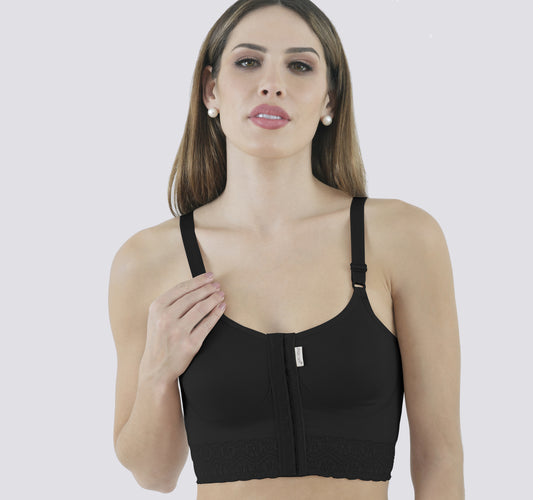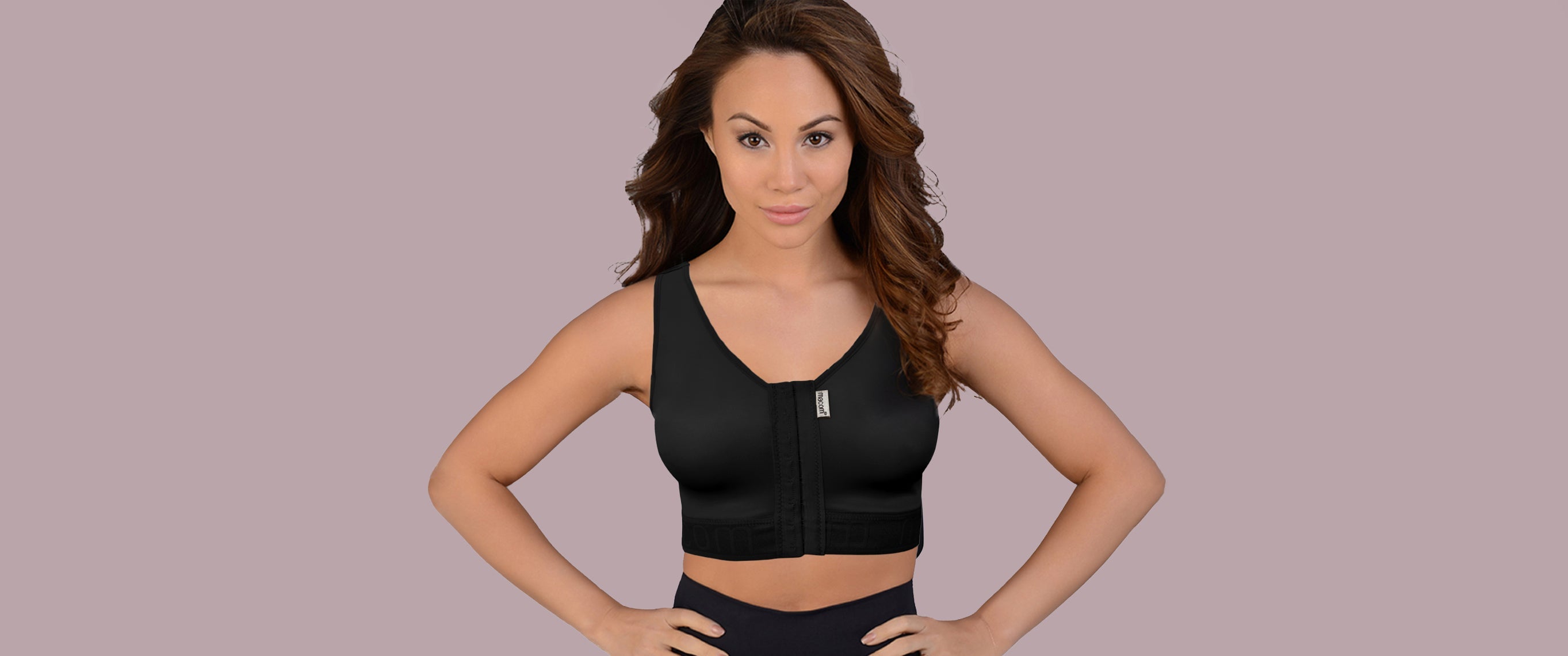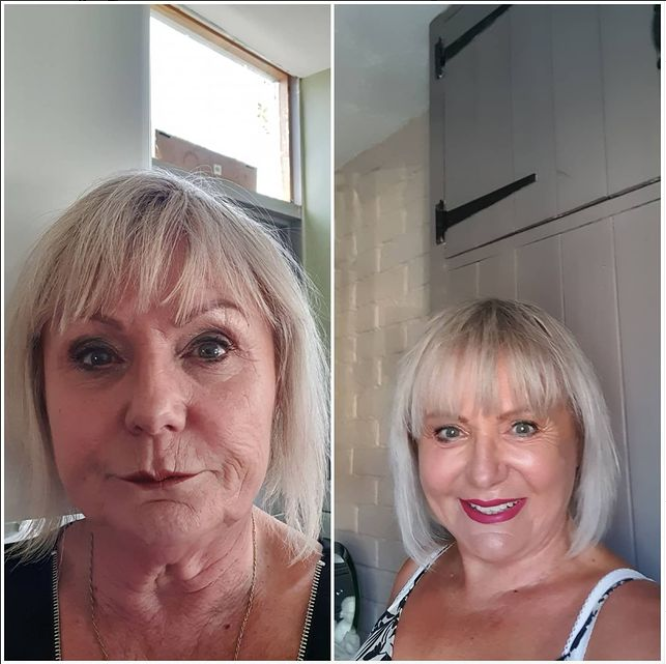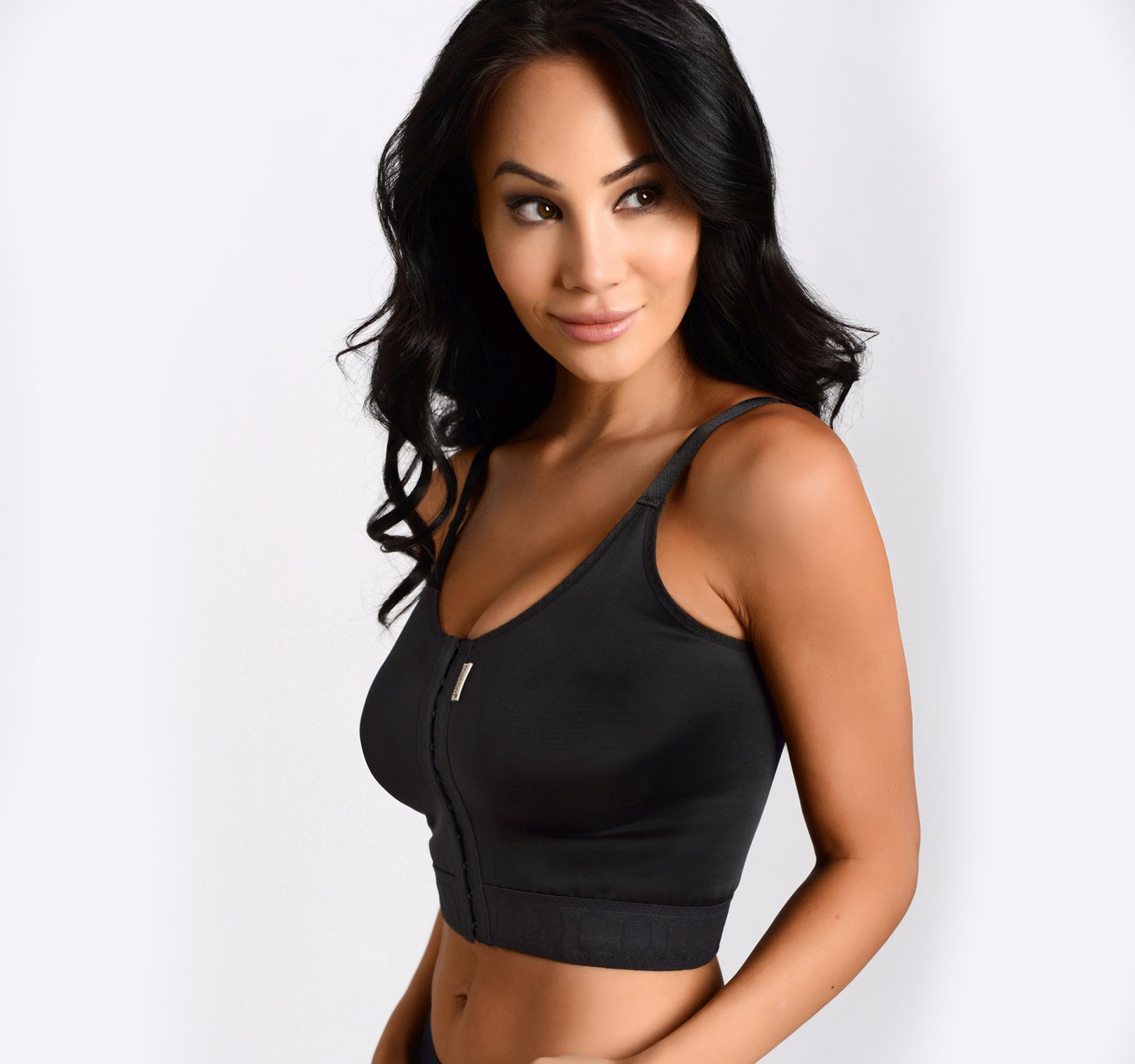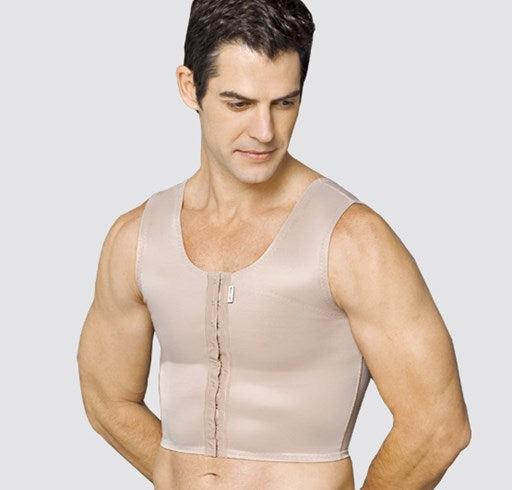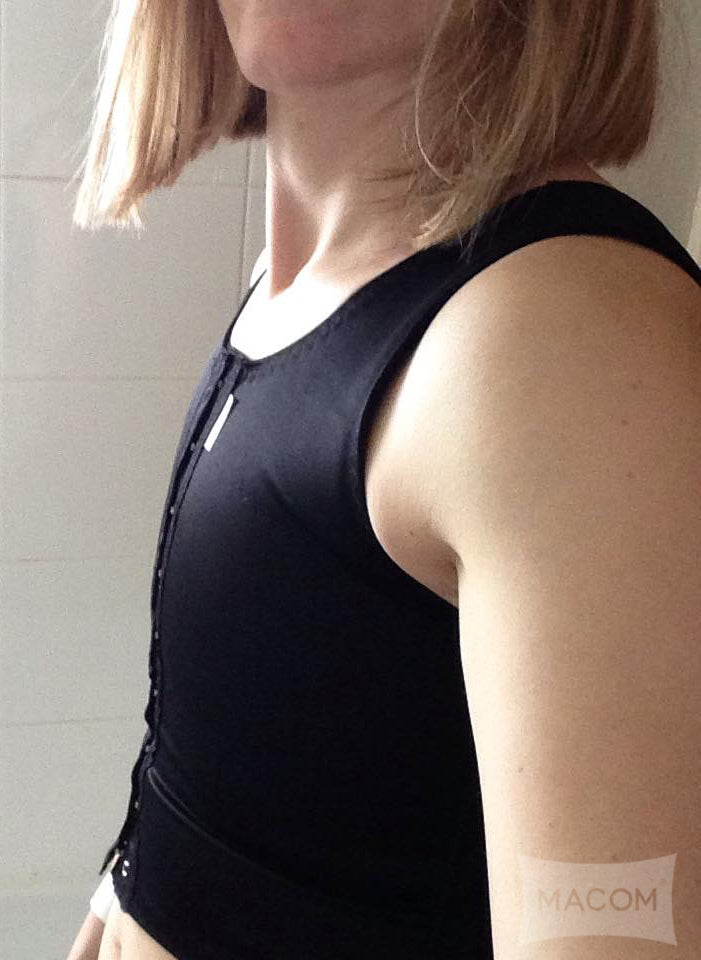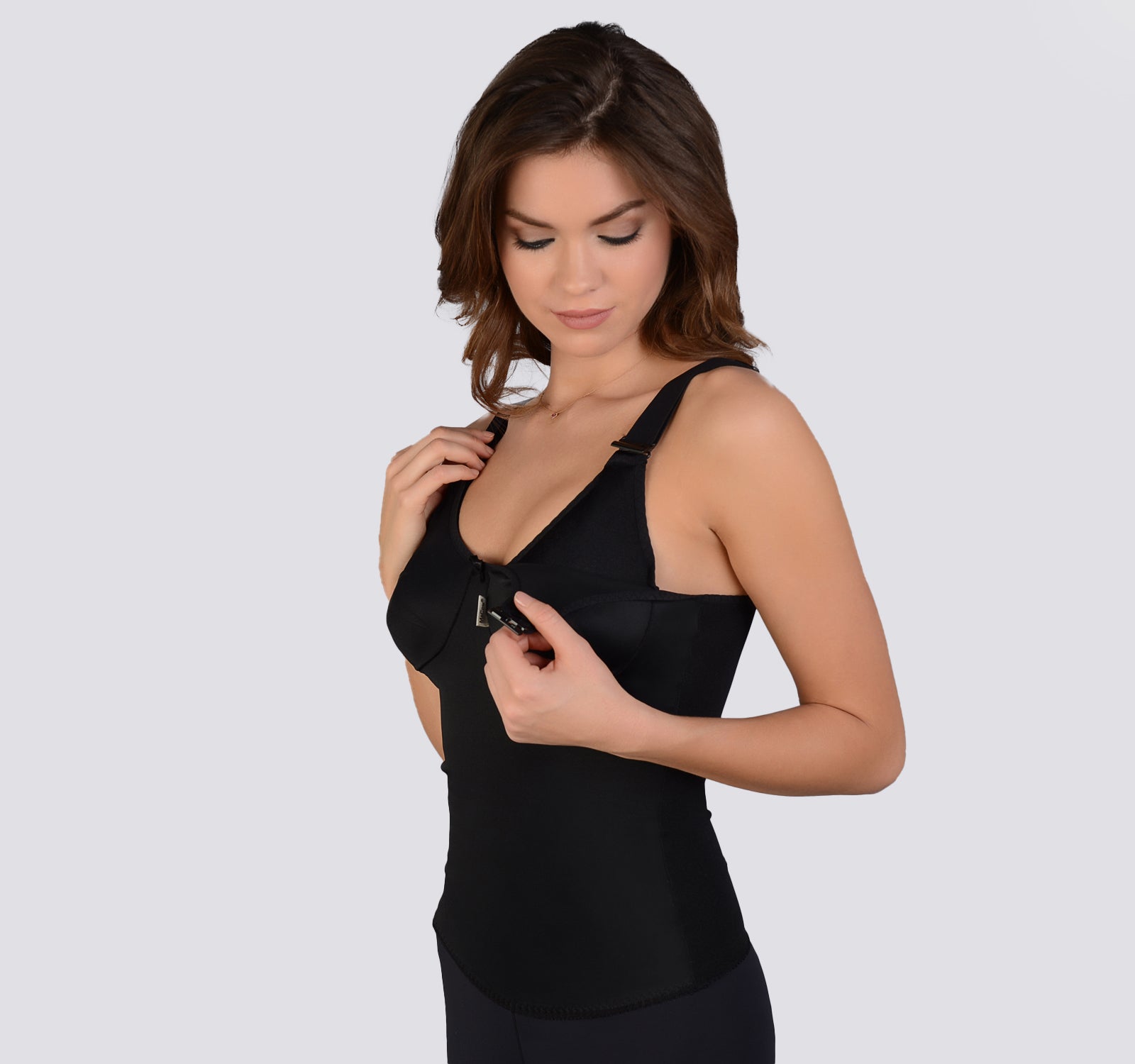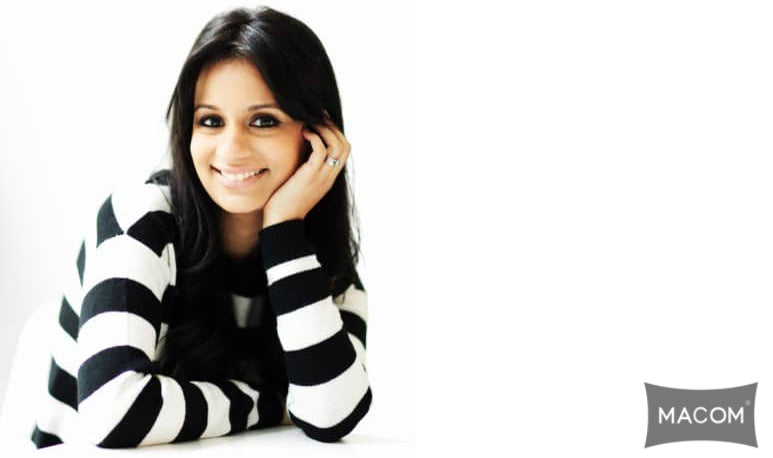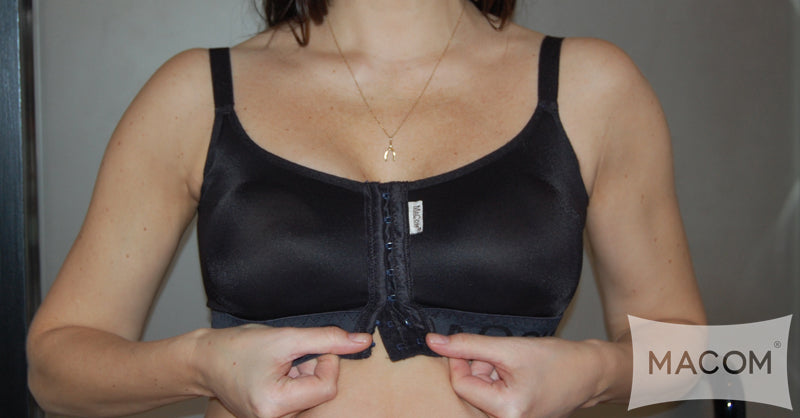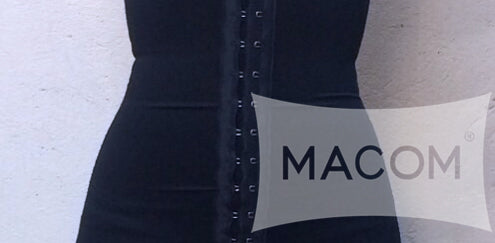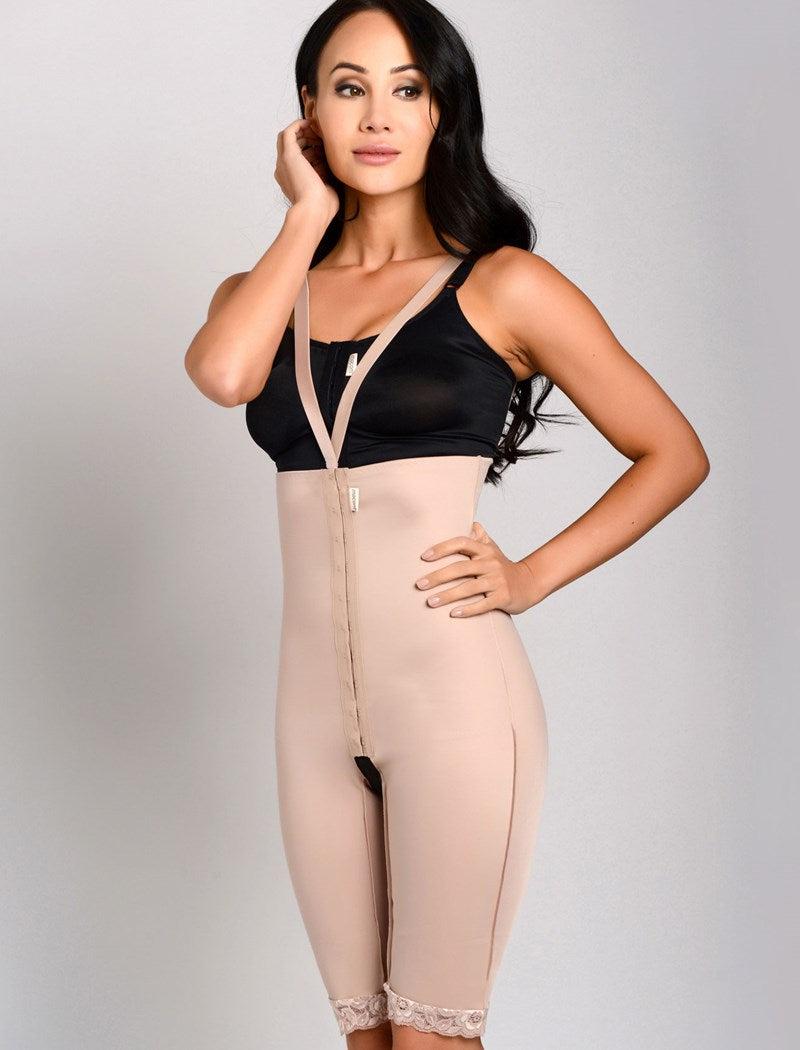The macom® Ultimate Guide to Cosmetic Breast Surgery - Breast Enlargement, Breast Reduction, Implants and Breast Uplift
What to expect post augmentation, post reduction & post mastectomy.
The perfect breastA few years ago, myself and a colleague Olivier Branford decided to establish whether there was an aesthetic breast ideal. Since our original research was published, we have carried out an extensive population study to see what the public at large feel about breast beauty and our paper on the subject recently won ‘Best International Paper Award’ from the American Society of Plastic Surgeons.
We produced a series of images of breasts, illustrating different proportions, and asked the public, in the largest study of its kind, to mark which was the most aesthetically appealing.The public’s response confirmed our original hypothesis about which breast shape was considered most attractive and, furthermore, it produced a powerful message that there is a universality about beauty.
It doesn’t matter your gender, your age, cultural or social background; overall, about 85% of the population chose the same breast shape.
This proportion has a 45:55 ratio, with the lower part of the breast slightly fuller below the nipple line, with a tight convex curve to the lower pole, the nipple pointing slightly upwards and the upper slope of the breast lying straight or mildly concave.
It certainly gives lie to the assumption that men and women like different things when it comes to breasts.
The response to our research has prompted us to produce a surgical guide on how to create these proportions. Using bio-dimensional planning, it’s the patient’s own anatomy that chooses the necessary surgical technique and, in the case of augmentation, the implant and placement of implant that is required.
The aim with a mastopexy or breast reduction procedure is no different, although it may be more challenging for the plastic surgeon. Their goal should always be to create these same proportions and you have to tailor your technique, depending on the patient’s individual anatomy.
There is more art than science in what the plastic surgeon does and the goal should always be to create beautifully natural breasts.
Mr Patrick Mallucci
Contents
Decision time
Planning and research is vital, so before you make the big decision to go ahead with surgery here’s what you should consider
- Research
- Consultation
- Understanding risks & valid consent
- Finances
- Implants & Warranties
The countdown
Covering everything from when to stop smoking, pain expectations and management to ordering your compression garment, here’s the low down on how to prepare for your op
The big day
Don’t stress; we cover what to expect on the day of your procedure so you’re fully prepared for your operation
Your Overnight Bag
What should you bring with you on your operation day.
The first week or so
What should I have at home? Will I be in pain? And why am I feeling so low?
We answer all the questions you’ll have in those first few days
Getting there
Healing after a cosmetic breast surgery procedure can take months – here’s what to expect during your recovery process
Maintenance is key
You love your new breasts, so how do you look after them?
Here’s our advice on how to maintain your results in the future
Useful websites when considering boob-job
Research
There are three crucial elements that contribute to the success of your cosmetic breast surgery procedure, also know as 'boob job', which can be summed up as the right procedure, performed by the right practitioner for the right patient.
Procedure
You’ll have a clear idea of what is bothering you about your breasts and it’s good to research all possible procedure options in advance of your initial consultations.
There are three main types of cosmetic breast surgery:
-
Breast Augmentation or breast enlargement (augmentation mammaplasty)
Also known as breast enlargement, breast enhancement surgery or a boob job, this is the UK’s most popular cosmetic surgery procedure. Favoured by both younger women who may have always felt their breasts are too small for their frame and older women who have seen changes to their breasts and are keen to restore curves that may have disappeared. The breasts are enhanced with the insertion of a breast implant, either under or above the muscle. Another option that’s growing in popularity is a fat transfer (liposuction and fat transfer to breast), often called a natural boob job.
-
Breast Uplift (mastopexy)
Sagging of the breasts affects all women as gravity kicks in and pregnancy, nursing or weight fluctuations can“all make the can stretch and sag, losing the natural fold under the breasts and the nipples, instead of facing up and forwards, can end up pointing down or to the sides.Your cosmetic surgeon can lift and reshape the breast to achieve a firmer, more youthful appearance, often repositioning and reshaping the nipples at the same time.
-
Breast Reduction (reduction mammaplasty)
Excessively large breasts in comparison to your frame can cause a number of problems,
from back and neck ache, skin rashes, to feelings of discomfort and embarrassment. They can also restrict what you can and can’t wear or do. During a breast reduction, your cosmetic surgeon will resize the breast tissue, removing excess skin or fat.The nipples are usually moved as well to a more appropriate position on the breast.
Practitioner
Practitioner choice is key to a successful procedure.The internet can be a fantastic resource, but the vast amount of information available can be bewildering and it can be hard to distinguish the reputable cosmetic surgery practitioner from the clever marketer.
There are independent plastic surgery associations in the UK which list their members.To be a member of the two leading organisations, BAAPS and BAPRAS, you have to be a consultant plastic surgeon on the plastic surgery registry and undergo regular safety audits.
Therefore, you can be assured that their members have undergone many years of training in aesthetic and reconstructive surgery of the face, breast and body.
In the UK, there are no restrictions on surgeons from other specialties from offering aesthetic surgery, but they will not have undergone the same level of training as a plastic surgeon, so it is important you ask all the right questions in the consultation in regard to their experience and qualifications.
Don’t necessarily worry if your surgeon is not with BAAPS and BAPRAS, as they may have chosen not to be a member but still hold all the relevant qualifications. Or they may have trained and qualified outside of the UK and are a member of the respective independent plastic surgery body of their country.
Patient
Be very clear about what you’re hoping to achieve – rather than just saying, I don’t like my breasts, be clear about exactly what is bothering you. Only then can your cosmetic surgeon give you the proper advice and you are likely to achieve your desired result.
The only expert on your appearance is you; the only person that should be making that decision is you. Beware a friend, family member or partner who might be talking you into having something you don’t want.
Timing is everything; avoid making such an important decision at a time of personal stress such as moving house or changing jobs.
Consultation
Your consultation is probably the most important stage of your cosmetic breast surgery journey.
At your consultation you should see the cosmetic surgeon that will be operating on you and who will provide all follow-up care. Prior to your consultation you may see a nurse or patient advisor to have an initial discussion of your expectations, but this should never be in place of a consultation with the cosmetic surgeon.
You should expect a frank and open discussion with your cosmetic surgeon about your concerns and aims.You should feel that your cosmetic surgeon understands exactly what changes you are hoping to achieve, but it’s sensible to keep an open mind, as they may have different advice.
They will perform a thorough physical examination to assess your ‘starting point’ in terms of your frame, dimensions and existing breast tissue and then they will give their opinion clearly about whether your expectations are realistic.
As well as the benefits, your cosmetic surgeon should explain precisely all the potential risks and complications associated with your specific cosmetic breast surgery procedure so you can make an informed decision.
If you feel that you are being put under any pressure to make a decision at this time then you should be prepared to walk away; a reputable cosmetic surgeon should give you a two week cooling off period and be prepared to answer any further questions you may have at a second consultation.
Top 10 Questions
-
Am I a good candidate for this type of cosmetic breast surgery and what are my alternatives?
-
How long have you been performing this particular procedure?
-
How many procedures do you perform a year?
-
If having a breast augmentation, which implants do you use and what’s their safety record?
-
What results can I expect and how long will they last?
-
What is your revision rate like and how would you deal with any possible complications?
-
Which hospital will my procedure be performed in?
-
What aftercare will I be offered?
-
Can I see before and after photographs of patients who have undergone a similar procedure?
-
Is it possible to speak to any of your past patients
Do I need more than one consultation?
“There is no right answer to this. This is one of the most important decisions you’ll ever make so you should invest time and consideration into your choice
of surgeon. However, for a more straightforward procedure such as a breast augmentation then you don’t always need more than one opinion. If you find a surgeon that you hear good things about and you are happy with the consultation, in that the surgeon understands what you are hoping to achieve and they are clear about what is realistic and you’re both in agreement at that stage, then it is not always necessary to see another surgeon.
Trust is everything. If there isn’t trust, then it’s probably best not to proceed with that particular practitioner.”
Mr Marc Pacifico, Consultant Plastic Surgeon
Understanding risks
All surgery carries risk and although a good part of your consultation for cosmetic breast surgery will focus on the benefits and the final result, it is vital that you fully understand all the possible risks before signing on the dotted line.
In practice, this means that before you make the decision to go ahead, you should be able to clearly describe what the procedure involves, what outcome you can expect, all the potential risks and complications and the chance that you may require a repeat operation at some point in the future. Your surgeon should also discuss with you alternative treatments or the option of doing nothing at all.
What is a ‘cooling off period’?
In light of the PIP breast implant scandal which emerged in 2010, the Government formed a committee led by Sir Bruce Keogh to evaluate the provision of aesthetic treatments in the UK. One of the many recommendations of the report that was published in 2013 was the cooling off period.
You should be given a cooling off period of at least two weeks to consider the implications of your proposed procedure before making the decision to go ahead and be wary of any cosmetic surgery provider that puts pressure on you to commit by offering financial inducements to do so.
Ideally, your cosmetic surgeon should provide you with written information on your procedure to take away with you and be happy to provide a follow-up consultation, often free of charge, if you have further questions.
The risks
Your cosmetic surgeon will describe all the potential risks of your procedure, explain how likely they are to occur and they should also touch on how they personally deal with any complications that arise:
Reaction to the anaesthetic; although some cosmetic surgeons offer breast enlargement under ‘twilight anaesthetic’, which is a combination of local anaesthetic and sedation, the majority of cosmetic breast surgery procedures are performed under a general anaesthetic which has a number of risks to the patient.
Infection; your cosmetic surgeon may use intravenous, topical or oral antibiotics, before, during and after the procedure, to lessen the chance of an infection developing.
Scarring; these should flatten and fade over time, but a small percentage of patients will suffer from keloid or hypertrophic scarring, where the scar becomes very thick, raised and red. Further scar reduction treatments may be required after surgery, although it is not possible to fully reverse this type of scar.
Haematoma; this is a collection of blood and is a more common occurrence. It will happen in the immediate period after surgery and you may notice pain, tenderness, swelling, bruising or discolouration in one breast. Haematomas can clear up on their own but it may be necessary to return to surgery for blood to be drained.
Seroma; a build-up of fluid around the implant or in the incision area. Surgery may be required but it is usually possible to remove the seroma with a needle.
Asymmetry; all women have slightly asymmetrical breasts with up to 40% having breasts that are different by one cup size or more. If the asymmetry is not taken into account prior to a breast augmentation procedure it can become more noticeable afterwards. A breast uplift or reduction which changes shape, size and position of the breasts can also produce asymmetry.This may need to be corrected in a follow-up operation.
Capsular contracture; this is a problem that relates to breast implant surgery alone.The body reacts to the implant by creating a shell of scar tissue around the surface of the implant and, over time, it can contract, causing the breast to feel hard or change shape and even pain.This is the most common long-term complication after a breast enlargement.
Change in sensation; some women report that there is an increase in sensitivity in the breasts after surgery, although more likely will be the chance that there is decreased sensitivity. Normal sensation should return as the body heals, but for a number of patients there will be permanent loss of sensation.
Deflation or rupture; all implants have a risk of rupture, usually as the result of wear and tear over time. It is immediately obvious when a saline implant has ruptured as the saline filling will instantly – and safely – drain away, leaving you noticeably flatter on one side. The new cohesive gel used in silicone implants means that the filling rarely ‘leaks’ but instead stays inside the shell or the scar tissue that has formed around the implant.

Finances
The Cost of Breast Implants
We understand that cost is a critical factor in your cosmetic surgery decision, but it should never be the most important one.
There are many components that make up the cost of a cosmetic surgery procedure; the surgeon’s fees, anaesthetist’s fees and your care both during your procedure and afterwards in hospital or clinic. In the case of a breast augmentation, then the expense of the implants used also has to be factored in.
Insurance should also be taken into consideration, as your surgeon, your anaesthetist and the hospital or clinic all should have the necessary insurance in the event that your procedure doesn’t go to plan.
So with all these costs making up the final figure, if the price of your cosmetic breast surgery procedure seems too good to be true, then it probably is and it can mean that some aspect of your care has been skimped on, leaving you at risk, at best, of not achieving the results you were hoping for.
One challenge that prospective patients often face is to get a clear idea of the cost implications when they’re researching surgeons or procedures. Many cosmetic surgeons or cosmetic surgery clinics will not give prices on their website or telephone, which can be frustrating, but there is a very good reason for this.
Every patient should be treated as an individual and there can be physical or medical considerations that need to be taken into account
Sometimes, a patient may require a combination of cosmetic surgery procedures or the operation may need to be more extensive to achieve the results they are hoping for.
However, once you have discussed your options in full at your breast surgery consultation and you and your cosmetic surgeon have agreed upon a treatment plan, you should be quoted a full and final figure that covers every aspect. This should encompass the procedure itself, any necessary medical care in hospital, for however long is necessary, and any aftercare appointments you require. You then should receive that quote in writing after the consultation.
Boob jobs on the NHS
It is highly unlikely that you will be able to have your cosmetic surgery procedure through the NHS. If there is a major physical or psychological reason why you would benefit from this type of surgery, this may be evaluated by your local clinical commissioning group (CCG).
Correction of breast deformities is strictly rationed on the NHS. Some cases that might be considered are: breast reductions, gross asymmetries, Polands Syndrome and tubular breasts. The exceptional circumstances vary from region to region.
In general, patients with more marked physical problems might be considered exceptional. Your GP or doctor will be able to tell you about the local rules that apply where you live.
Cosmetic surgery and private medical insurance
Private medical insurance will usually only pay for procedures that are deemed medically necessary and cosmetic surgery is viewed as elective, with the aim being to enhance the patient’s physical appearance.
However, there may be a medical reason why your cosmetic surgery procedure is necessary. A rhinoplasty procedure is usually undertaken only to correct the function of the nose. A hump on a nose is not considered a medical problem but a nose that has a deviated septum and makes it difficult to breathe through is.
Cosmetic breast surgery may also be deemed medically necessary; for instance, excessively large breasts that are causing physical problems which can be relieved by a breast reduction.
Check the terms and conditions of your policy carefully and visit your GP for a referral to a cosmetic surgeon.
Cosmetic surgery finance
Once the price has been agreed your surgeon or the hospital or clinic chain where your procedure will take place usually have a relationship with a finance company that offer loans or finance to cover your procedure.
These range from interest free credit arrangements that usually have to be paid off over 12 months or loans that can be spread over a few years. Discuss this with your clinic at your consultation.
Implants & Warranties
In the UK, there are two main types of breast implants that are commonly used. The outer layer of both types are made of medical- grade silicone, but they are then either filled with silicone or saline. Another type, polyurethane-coated silicone implants, are favoured by some surgeons and it’s thought that they have a lower risk of capsular contracture.
It is important that your breast implant is manufactured by a company that has a good safety record and whose products are rigorously tested. Leaders in this field include Mentor, part of the Johnson & Johnson pharmaceutical company, Natrelle, manufactured by Allergan, and Impleo from Nagor, the only UK-based breast implant manufacturer. Your cosmetic breast surgeon may offer implants from a number of different manufacturers as certain implants might be better suited to your needs and requirements.
Generally, breast implants come in two different shapes and a number of different sizes and projections. The surface of the implant also varies, with textured or smooth surfaces available. This gives your cosmetic breast surgeon many hundreds of different implant options and that, coupled with implant placement, allows them to produce an aesthetic result that best fulfils your expectations.
Breast implant warranties
The leading breast implant manufacturers all offer warranties to cosmetic breast surgery patients and your cosmetic surgeon can discuss what the implications of these warranties are in relation to problems developing with your implants.
These are limited warranties in that they do not cover problems relating to surgery and usually just cover implant rupture and, in some cases, capsular contracture. These warranties will not cover you if you are dissatisfied with the size and/or shape of your chosen implants after your procedure.
Each manufacturer differs slightly in terms of what they offer; some only offer like-for-like in terms of implant size replacement, while others will cover a change in implant size. Typically, the warranties cover just the cost of implant, but not the costs of the surgeon or hospital, although some can offer financial compensation towards surgical costs, depending on the circumstances.
FDA approval
In your research of breast implants you may have come across the phrase ‘FDA-approved’. The FDA is the American government body that approves new drugs and devices, such as breast implants. Approval is the result of a very lengthy process of trials and testing, so it does signify good quality and high safety standards. But don’t worry if the implants you’re considering haven’t got FDA approval. As consultant plastic surgeon Mr Marc Pacifico explains: “Gaining FDA approval is hugely expensive so it may not be economically viable at this stage for some implant manufacturers to go for FDA approval but that's not to say that they aren't perfectly safe, good implants."
“Every cosmetic surgeon has their own approach to sizing. I use a bio-dimensional approach which is a very effective way of accurately measuring breasts. In my opinion, an implant should fit a breast very much like a hand fits a glove and, therefore, there will only be a narrow range of implant options that will suit each particular patient.”
Mr Marc Pacifico, Consultant Plastic Surgeon
The Countdown
One month to go
Stop smoking
Ideally, you should stop smoking at least a month before and your cosmetic surgeon may choose not to operate if you are unable to quit. Smoking can greatly increase your risks under
a general anaesthetic because of its impact on the heart and lungs. Smoking after can also compromise your results, which is why you will be advised not to smoke for at least a few weeks afterwards.The body needs ample supplies of oxygen for the healing process, but nicotine reduces the amount of oxygenated blood that gets to the tissues and skin can even ‘die off’.
♥ Keeping healthy
Cosmetic breast surgery, whether a lift, reduction or enhancement, is suitable for most patients if they are in good general health.
Making sure you’re in optimum health prior to cosmetic surgery, though, can ensure the best chance of a good recovery. Stay hydrated, eat a well-balanced diet and get plenty of rest.
If you feel ill in the run up to your surgery date, contact your cosmetic surgeon and they may advise that you are cleared by your doctor or your procedure may need to be postponed until you are feeling fit and well.
Two weeks to go
Medications
During your cosmetic breast surgery consultation, a full medical history will be
taken where you will be asked to disclose any medications you are currently taking.These will have been taken into account, possibly after discussion with your GP, and you will have been given clear advice on which ones are safe to continue taking.
Over-the-counter medications, such as aspirin, ibuprofen or blood thinners, should not be taken as they can increase the risk of prolonged
bleeding. All herbal medications, vitamin E or diet pills should also be discontinued at this time.
GP consent
Although you do not need to have a GP referral to see a cosmetic surgeon, if you have made the decision to go ahead with a cosmetic breast surgery procedure, your cosmetic surgeon may request
your permission to contact your GP for your medical history.This is usually just a safety precaution to ensure you’re fit and well for surgery and a general anaesthetic.
One week to go
Pain management
One of the most commonly asked questions during a cosmetic breast surgery consultation is ‘Will it hurt?’This can be a difficult question to answer as every patient’s pain threshold differs.
What is becoming increasingly clear though
is that educating patients so they know what to expect in regards to pain and how it can best be managed, can help patients focus on the positive rather than the negative aspects of their surgical procedure.
In terms of breast augmentation, the placement of the implant is an important factor. Any post-operative pain will typically resolve in a few days after a sub- glandular augmentation, where the implant is placed under the breast tissue, but can take up to a couple of weeks when the implant is placed under the muscle.
A breast reduction is usually a well-tolerated procedure, with any pain or discomfort easily controlled by the pain relief you will be prescribed by your cosmetic surgeon or over-the-counter painkillers. The same follows for a breast uplift although this procedure is often combined with an augmentation.
The success of your cosmetic breast surgery procedure can be greatly enhanced by how well prepared you are for surgery. Although the following should not take precedence over the instructions you are given by your cosmetic surgeon, here’s a handy guide of how you can best prepare for your procedure.
Exercise
Exercise is greatly beneficial to your health and there are no restrictions on working out before your procedure. Exercise is also a fantastic stress reliever, pumping out endorphins and helping you sleep, which can be beneficial if you are becoming anxious in the run up to the big day.
Getting into shape before your surgery is also important. If you’re contemplating any form of cosmetic breast surgery, it’s best that you are at or near your ideal weight as further weight fluctuations can affect your results, so schedule surgery when you have achieved the body shape you want.
Pre-op screening
You will usually be invited for a pre-operative screening appointment at some point before your cosmetic breast surgery procedure.This is typically carried out by the practice nurse. Measurements of your height, weight and blood pressure will be taken at this time.
In rare circumstances there may be other tests and scans required and these can include blood and urine tests, ECG, ECHO or lung function tests, MRSA swabs. These will have been discussed at your consultation.
Pre-operative photographs may also be taken during this appointment or on the day of surgery.
Order and try on bra/garment
Your cosmetic surgeon will advise you on the wearing of a specially designed compression garment during your recovery. Many supply these as part of your care.There are multiple benefits to a compression bra; it minimises swelling, improves blood circulation, promotes lymphatic drainage, assists the skin in adapting to your new contours and can improve scar healing. For breast augmentation patients it will also keep implants in the correct position.
It is advisable to order your compression bras well in advance of your cosmetic breast surgery so you
can ensure a good fit; the bra should fit snugly but
not too tight to cause discomfort and it should cover the incisions and surrounding area. Suppliers of compression garments should provide size guides and measurements to help you with fit and you should have the option to easily exchange or return the item.
Often patients are advised to buy a bigger bra to accommodate their new shape, but your back size won’t change, which means you might not be getting the correct support.The macom bra is designed with expandable cups that adjust to your shape, so you just need to order your pre-surgery size for a perfect fit.
Alcohol
It is advisable to stop drinking at least a week before and after your procedure as alcohol can impact on the safety of your procedure, both in terms of how it affects your body’s reaction to the anaesthetic and how it compromises the body’s immune system and ability to heal.
Skin health
Most hospital outbreaks are caused by the bacteria that exists on the skin and it is possible to purchase anti-bacterial soap that can help minimise this risk.
Plan for leaving hospital
Arrange for a friend or family member to take you to hospital on the day of your procedure and, more importantly, are on hand to take you home afterwards.
They should remain with you for at least 24 to 48 hours as you’ll be feeling the after effects of the anaesthetic as it wears off and you’ll also start feeling pain and discomfort from the wound.
Rearrange any major work or social commitments for at least a couple of weeks after surgery and allow your body to get all the rest it needs during the recovery period.
The Big Day
Every clinic, hospital and cosmetic surgeon will differ slightly in terms of what happens on your operation date but they should give you comprehensive instructions of what to expect before your big day.
Here are some general guidelines on what you should do before going into hospital:
-
Take a shower and wash your hair as you may not want to be raising your arms up high after your procedure
-
Do not apply any body moisturiser or deodorant on the day of your procedure
-
Clean your teeth but do not drink any water – you’ll probably have been told to not eat and drink 12 hours before arriving in hospital
-
Bring any medications with you to hospital
-
Do not wear contact lenses
-
Don’t put on any make-up or nail polish on the day of your operation
-
Don’t wear any jewellery and remove any body piercings
You will have been told to arrive at the clinic or hospital at a specific time on the day of your procedure, where you will then be admitted by the practice or ward nurse and taken to the pre-surgical room. Pre-surgery photographs may be taken at that point.
You should be visited by your cosmetic surgeon who may mark you up prior to your cosmetic breast surgery procedure. You will also be seen by your anaesthetist and both they and the surgeon can answer any further questions you may have.
You will not be able to drive yourself home after your cosmetic breast surgery procedure so a trusted friend or family member should bring you to the hospital and be on hand to take you home when you have been discharged.
Your Overnight Bag
Apart from your toiletries and pjs – think comfort and something with buttons or a zip – what should you be packing in your overnight bag? We spoke to women who’ve already undergone cosmetic breast surgery, to find out which item was top of their list and what they regretted not packing:
-
Dry Shampoo
-
Baby wipes
-
Magazines or books
-
Kindle or iPad
-
Sweets or snacks
-
A few straws
-
Hair bands
-
Electric toothbrush
-
Sports drinks
-
Gel ice packs
-
Change for snack machine or payphone
-
Laxatives or stool softners
-
Shower cap
-
Sleep mask
-
Pyjamas
-
Slippers
-
Compression garment / post surgical bra
The First Week Or So
Breast augmentation post op care
When you are discharged from hospital, someone should be on hand to bring you home and, ideally, be with you for at least a day or two after your procedure as you’ll be feeling groggy after your anaesthetic and will be in considerable discomfort.
In terms of pain, the first week will be the most uncomfortable. Swelling will be at its worst and any bruising will appear. This can be a challenging time for any patient so here’s our advice on how to sail through your first week or so.
1 day post op:
-
What to have at home
Put together a recovery pack prior to going into hospital, with any necessary toiletries, medicines, dressings and ice packs so they are close at hand when you return home. Buying a second compression garment is advisable. In the first week you’ll be resting as much as possible, so pile up the pillows and have the TV remote close by.
Our advice: make sure you’ve sorted childcare arrangements and if you have pets then consider booking them into kennels or a cattery for a while as you won’t be up to looking after them.
-
Post-op blues
Emotions often run high before your op. You’ll be rushing round to prepare for your recovery, feeling understandably apprehensive about surgery and excited about the thought of your new breasts.
It is therefore quite common to get the 'post-op blues' immediately after or in the first couple of weeks. Your breasts are feeling sore, your body bruised and swollen and you’ll be wondering if it was all a big mistake.
Our advice: make sure you have friends or family on hand so you don’t feel isolated after your surgery. Often just talking about how you feel can help.
-
Bloating after boob job
Water retention is common after any surgical procedure as it causes the soft tissues to swell. Also a common side effect of general anaesthetic and pain medication is to slow down the intestinal tract.
Our advice: to avoid constipation, make sure you drink enough fluid, have enough fibre in your diet and start moving around as soon as possible. Make sure you have stool softeners on hand.
3 days post op:
-
Diet - what to eat after breast surgery
There is no special diet that you should be on after your cosmetic breast surgery procedure and no foods that you should avoid. You may feel nauseous immediately after the operation as a result of the general anaesthetic, but once you are home you should return to a healthy and varied diet as soon as possible to assist in the healing process. Avoid alcohol in the first weeks after your surgery as it can worsen swelling, increase the risk of bleeding and can undermine the natural healing process.
Our advice: before going into hospital make sure your fridge and freezer are stocked with healthy snacks and easy-to-prepare meals and you may want to organise a supermarket home delivery with plenty of fresh fruit and vegetable for later on in the week.
A couple of weeks post op:
-
Sex after having surgery on the breasts
Curious, aren’t you? Even if you don’t feel comfortable asking this question, it’s one that most women want to know: when is it safe to have sex again after surgery. Advice will vary, but generally sex is equated with exercise and most cosmetic surgeons will advise patients not to exert themselves physically in the first couple of weeks after surgery. Anything that raises the blood pressure can increase the risk of bleeding, but most importantly you have to look after your new breasts so avoid manipulation that could displace the implants or damage your incisions.
Our advice: don’t be embarrassed to ask your cosmetic surgeon for their advice about anything relating to your body. When you have been given the go ahead, take it slowly.
-
Exercise after boob job
Exercise falls into the same category as sex. Every surgeon will have slightly different advice in terms of resuming exercise, but typically you should avoid anything that raises heart rate and blood pressure levels in the first few weeks after surgery. As long as you are healing well, then you should be able to perform lower body exercises after that, but wait for approximately six weeks before you start doing more strenuous physical exertion or weight lifting.
Our advice: follow your cosmetic surgeon’s instructions to the letter and ask if you’re not sure. When you do start to work out then the best thing is to listen to your body – if something doesn’t feel right then stop and wait.
-
Massage and lymphatic drainage on the breasts after surgery
This topic causes quite a bit of controversy among cosmetic surgeons. Some believe that it speeds up recovery by aiding lymphatic drainage, improves results by minimising scar tissue and even lessens the risk of capsular contracture. Other surgeons believe that massage has no impact on the likelihood of tissue hardening around the implant and won’t affect your final results positively or negatively. Discuss this with your surgeon and get their view.
Our advice: if you’re unsure exactly how to massage your breasts there are many instructional videos on YouTube.
-
Post-op check up
Every cosmetic surgery practice has a slightly different routine with post-op check ups, in terms of how many and how often, but you should certainly see the surgeon that performed your op in the first week after surgery. This is their opportunity to assess your breasts and incisions and for you to ask any questions you may have.
Our advice: keep a pad and pen to hand in that first week and make a note of any questions you may have as it can sometimes be hard to remember everything you wanted to ask your cosmetic surgeon.
A surgeon’s take on scarring
Scarring is one of the biggest concerns for those undergoing cosmetic breast surgery, particularly for breast reduction and breast uplift procedures, so we asked top plastic surgeon and breast expert Mr Patrick Mallucci for his take on scarring:
“There are two elements to scarring. Number one is what the surgeon does and the second is how the patient scars as an individual. As
a surgeon, all I can do is be technically precise in my planning and execution of the procedure. Surgeons will often say that the surgery
is the easy bit and the planning is the more challenging aspect of any procedure.
For any cosmetic breast procedure, I will carefully plan each stage of the procedure, ensuring there is no unnecessary tension on the wound, and then follow that with fine surgical execution.Then the rest is up to the individual and how they scar.
Incisions, and therefore scars, allow the surgeon to make changes to the breasts and no scars means no change. Shape is always king and if you can create a beautiful new shape to the breasts that will be what the patient focuses on and the scars will become much less significant.”
Why is a post-surgical compression bra so important?
There are a number of benefits to wearing a post-surgical compression garment even in the first week or so:
• minimises swelling
• does not irritate the incisions
• improves blood circulation
• assists in lymphatic drainage
• for breast augmentation patients, it keeps the implants in position
• the patient can return to normal activities as quickly as possible
Our advice: make sure you have ordered your bra way in advance of your procedure, so you can practise putting it on.
Look for a brand such as MACOM that has designed its post-surgical bra with expandable cups that mould to your new shape. Choose your pre-surgery size and it will fit after the procedure, whether you are having a breast augmentation or reduction.
Getting There
We ask leading consultant plastic surgeon Mr David Floyd for his advice on how to cope during the recovery process and answer some of your questions:
1. My cosmetic surgeon has advised that I wear a compression garment for six weeks after my procedure. Why do I need to wear one for so long?
After cosmetic breast surgery, I would usually recommend a support/compression garment to be worn day and night for the first six weeks. The reason for this is to support the surgical site while it goes through the post-operative wound healing process.
Patients who remove the garment too early can often get rebound swelling, which they don’t like. The reason for wearing garments for six weeks is that this is the amount of time taken for the majority of the swelling following surgery to settle down and for most of the primary wound healing within the surgical site to take place.
2. I love to work out every day and I’m really not looking forward to giving it up while I recover. When is it safe to exercise again after surgery?
I usually recommend a full six weeks of no actual exercise.You don’t want the surgical site being vigorously exercised as that can cause more swelling and bruising and it can slow down the recovery process. If a patient has had breast surgery, then it may be fine to sit on an exercise bike and just use their legs, but so many activities tense up the important core muscles that I’m pretty strict at adhering to the six week rule.
3. I can’t wait to go out and buy new bras after my breast augmentation – when can I start wearing underwire or push-up bras?
I typically allow patients to get into normal underwear at six weeks. However, it is sometimes difficult to get into underwired bras that soon and I recommend patients experiment with bras in the shop before buying to find a bra that fits comfortably.
4. How many check-ups should I be expecting after my boob-job? My cosmetic surgeon has only mentioned the first one that will be a week after my procedure.
Following breast or abdominal surgery my follow-up regime is normally a wound check at one week, then a follow-up with the surgeon at six weeks, three months and six months. Then, depending on the procedure, the patient will be discharged. But also patients under my care have access to see me at any point and at any time in the future should they need advice, at no extra charge.
5. My cosmetic surgeon advised me to avoid exposing my scars to the sun for at least two months after my breast reduction procedure, but I thought the sun would help the scars heal quicker. Why do I have to avoid direct sun exposure for so long?
Scars are very vulnerable to direct sunlight for two years post-op, not two months. I usually recommend that they shouldn’t really be exposed to direct sunbathing for a full two years, or perhaps after a year so long as they wear factor 30 sunblock and above. The problem is that the scarred area is very vulnerable to ultraviolet light in the first year and then prone to sun damage.
6. I keep reading about ‘dropping and fluffing' on breast augmentation forums - what does it mean?
Sometimes implants will drop a little on the chest wall and this sometimes can make them look a lot more natural and remove some of the unnatural fullness from the upper pole, but sometimes it can leave the nipple rising too high and looking a little odd. ‘Fluffing’; I have no idea what that means, it’s not an expression that I am familiar with!
7. I’m really eager to have a breast uplift, but not too keen on the thought of the scars I’ll be left with. Is there anything I can do to minimise scarring?
Breast uplift surgery does involve additional scarring, usually around the nipple and sometimes with a vertical line beneath this in the form of a lollipop scar, and often also with a transverse scar in the crease.
Scars are permanent and if you know where to look they are always there, but as plastic surgeons we have a whole strategy in place to minimise scar visibility. The wounds are meticulously stitched by the plastic surgeon, using stitch materials that minimise scaring. We then use taping of the wound for a whole month post-operatively to minimise movement at the scar, which also reduces the amount of scar tissue that is produced.
From one month onwards we use scar massage to help the scar tissue to soften up and flatten and it can take a full two years for the scar to reach maturation and fade back to normal skin colour. For patients who get slightly raised scars we would often recommend using silicone ointment or silicone tape to help flatten this off too.
So there are a range of strategies that we can advise our patients to use in the recovery period to help minimise scarring.
Maintenance Is Key
Before we get onto the nitty- gritty of maintenance, let’s answer one of the most frequently asked questions after cosmetic breast surgery: when will I get to see the final results?
For breast augmentation, it roughly takes three months for your breast implants to ‘settle’, with implants under the muscle taking slightly longer than those placed just under the breast tissue.
The final results of a breast uplift or breast reduction can also take a few months to become fully visible, as there will be a degree of swelling that needs to subside and also gravity and the weight of your breasts will cause them to ‘fall’ into their final position.
We touched on how to treat your scars in the previous section, but it is important to realise that they can take up to a year before they fully flatten and fade and you can see your final results.
1. Breast ptosis
Ptosis is the medical term for drooping or sagging of the skin or tissues. Almost all women will experience some sagging of the breasts, due to the effects of gravity, the ageing process, pregnancy, fluctuations in weight or a genetic predisposition.
A breast lift is the op you need to correct breast ptosis, but it won’t stop further sagging of the breasts over time. Women who’ve undergone a breast augmentation with implants will also see these natural changes to their breasts and, in extreme cases, it can affect the results of your breast augmentation procedure, as the breast tissue ‘slides off’ the implant.
Top Tip: Marked weight gain or loss can have a drastic impact on the appearance of your breasts, so it’s best to be near or at your ideal weight before your procedure and to have maintained that weight for a period of time.
2. Breast scanning
In the UK, all women over the age of 50 and under 70 are automatically offered a breast cancer screening in the form of a mammogram. However, if you are worried about changes in your breast don’t wait to be invited, but see your GP immediately for an assessment.
Mammograms are an important tool in identifying breast cancer early and the earlier it’s detected, the better your chance of survival, so you shouldn’t avoid a mammogram out of fear of affecting the results of your cosmetic breast surgery. From about eight weeks post-op, your scars will be strong enough to undergo a mammogram, although it is best to leave it a few months, if possible, to be on the safe side.
Breast cancer screening after a breast augmentation procedure with implants is slightly different. The x-rays used in mammograms cannot penetrate the silicone or saline to image any breast tissue covered by the implant. Advise your GP that you have implants and additional x-rays will be taken to capture as much of the breast tissue as possible. But don't worry, your implant will not be ruptured during a mammogram as they are very strong and ruptures are generally caused by wear and tear as opposed to trauma.
TopTip: Your cosmetic surgeon can arrange a private mammogram prior to your breast augmentation for you to have a record against which to check future scans.
3. Having implants and pregnancy
First things first, pregnancy is totally safe when you have breast implants. Studies have not proved any increased risk to the mother or child in those women who have undergone a breast augmentation with either silicone or saline implants. As many young women opt for a breast augmentation, it’s highly likely that they will want to have children at some point in the future.
However, pregnancy-related hormonal changes can have an impact on your breasts. Then, during nursing, the breast tissue swells and then contracts, causing the skin and tissue to stretch. It is impossible to predict the effect that pregnancy or breast feeding will have on your breasts, but most women find that there they are still satisfied with the results of their breast implant surgery after having children.
Top tip: It's not always possible to plan for every eventuality, but if you're considering having children in the next year or so, then it's probably best to delay your procedure until afterwards.
4. Breast feeding
Beware any cosmetic surgeon that promises you can still breast feed after a breast augmentation, uplift or reduction. Any form of breast surgery comes with a risk that the woman will not be able to breast feed afterwards or will experience a reduction in their ability to do so. This can be the result of damage to the milk ducts or from pressure caused by the presence of implants.
However, it is important to bear in mind that not all women are able to breast feed successfully, whether they have had surgery or not.
Top Tip: Some techniques in terms of implant placement or position of incisions are thought to be more helpful in optimising the ability to breast feed afterwards, so discuss this with your surgeon during your consultation.
5. Capsular contracture
This is the most common complication after a breast augmentation and it’s thought that approximately 8% of women will experience this problem at some point.
Anything that is implanted into the body, whether it be a pacemaker, artificial joint or implant, causes the immune system to surround the foreign body with a thin layer of scar tissue. Capsular contracture occurs when this scar tissue tightens around a breast implant, causing it to harden, become distorted in shape or even shift position and you may have to undergo a follow-up procedure called a capsulectomy where your surgeon will remove your current implants and create a new pocket in which to insert different implants.
Top Tip: It is impossible for your cosmetic surgeon to predict whether you will develop capsular contracture, but placing the implant under the muscle seems to decrease the risk, so ensure you cover every aspect of implant placement with your surgeon.
6. Implant movement and rotation
This is more of a problem with teardrop-shaped implants as round implants will always produce the same result even if they do rotate.
However, developments in the design of anatomical implants, including the introduction of textured surfaces, has greatly reduced the risk of these implants rotating. Your cosmetic surgeon will create a pocket for the implant to be placed in and there are techniques they can adopt which will lessen the chance of rotation.
Top Tip: If you have decided to opt for teardrop-shaped implants, ask your cosmetic surgeon how they will deal with the problem of implant rotation if it arises.
7. Removal or changing of implants
Every plastic surgeon will give you slightly different advice on how often you will have to replace your implants, although the general rule of implant longevity seems to be 10 to 15 years. Usually, your implants are fine to keep in as long as there isn’t a problem with them, such as rupturing, rippling or capsular contracture.
Another reason why women commonly want to have their breast implants changed is because there has been a change in their circumstances or body shape and they wish to change the size, shape or position of their implants to something that better suits them.
Top Tip: If you’re considering a breast augmentation procedure with implants, it is important that you take on board that your first breast surgery will probably not be your last.
Now you understand more about breast augmentation procedures and recovert, explore our range of supportive compression bras.
Useful websites
Checking credentials
The Royal College of Surgeons of England: www.rcseng.ac.uk
List of Registered Medical Practitioners, General Medical Council: www.gmc-uk.org/doctors/register/LRMP.asp
England; Care Quality Commission: www.cqc.org.uk
Northern Ireland; Regulation and Quality Improvement Authority: www.rqia.org.uk
Scotland; Healthcare Improvement Scotland: www.healthcareimprovementscotland.org
Wales; Health Inspectorate Wales: www.hiw.org.uk
The Department of Health, Medicines and Healthcare products Regulatory Authority: www.mhra.gov.uk
Independent plastic surgery organisations
British Association of Aesthetic Plastic Surgeons: www.baaps.org.uk
British Association of Plastic Reconstructive & Aesthetic Surgeons: www.bapras.org.uk
UK Association of Aesthetic Plastic Surgeons: www.ukaaps.org
Association of Breast Surgery: www.associationofbreastsurgery.org.uk
Preparing for your op
NHS Quit Smoking: www.nhs.uk/smokefree
Compression Garments: www.macom-medical.com
Breast implant manufacturers
Nagor: www.nagor.com
Allergan: www.natrelle.co.uk
Forums & review sites
So Feminine: www.sofeminine.co.uk
Real Self: www.realself.com
WhatClinic: www.whatclinic.com
Complaints
Independent Sector Complaints Adjudication Service: https://iscas.cedr.com/

